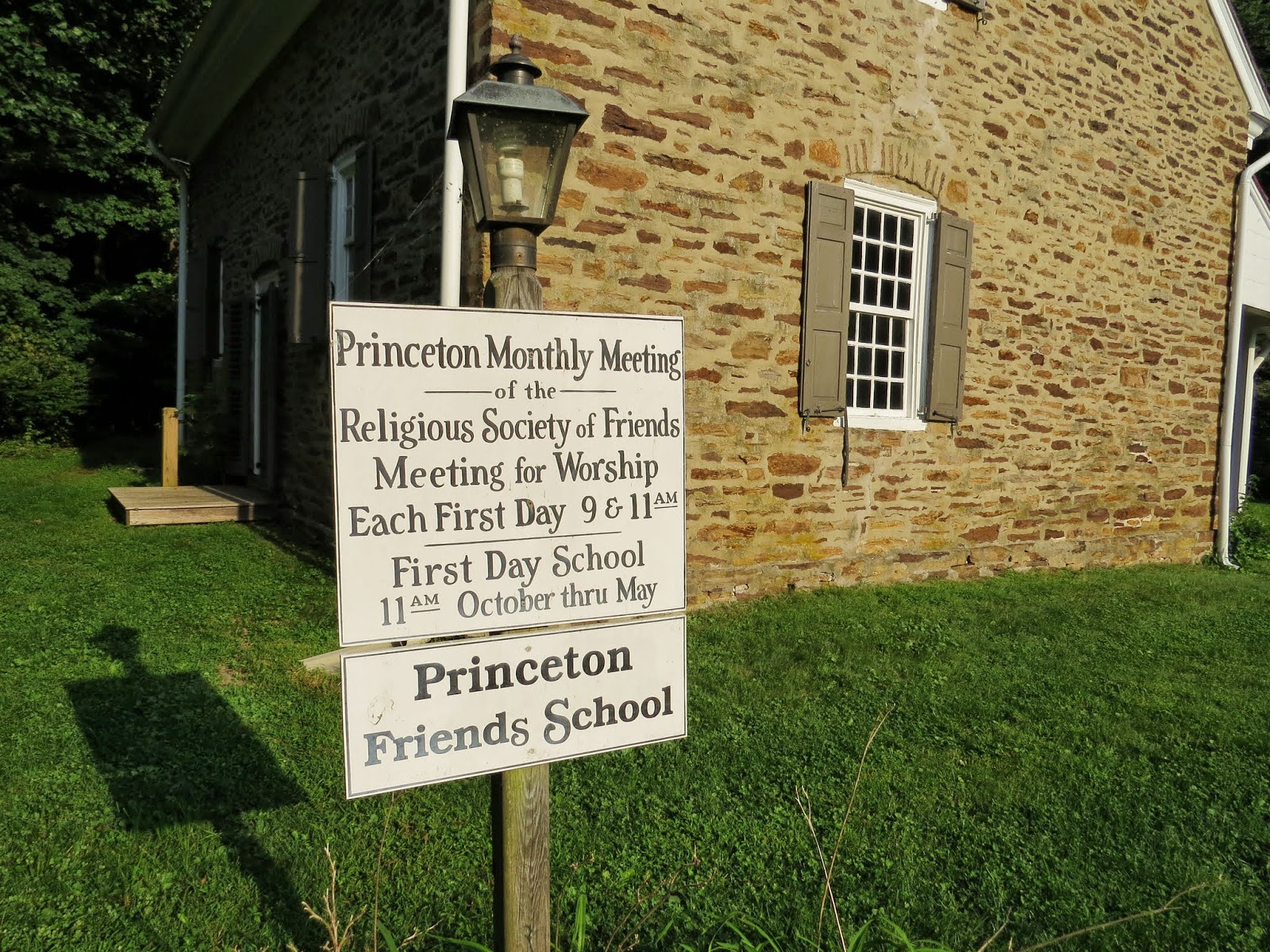Wednesday, September 18, 2013
Updike Farm and the Quaker Meeting House
Here, in the southwest corner of Princeton, out Quaker Road, where Washington led his troops by night towards improbable victory, soybeans grow and the Historical Society of Princeton makes its home at Updike Farm. I like to think of Princeton as being anchored in the southwest by the expansive farms of the StonyBrook valley, and in the northeast by the microfarms of the boulder-strewn Princeton Ridge's Herrontown neighborhood, best exemplified by the Veblen farmstead, where an 1870 farmhouse still stands.
Oswald Veblen, math professor and visionary, had a hand in preserving both of these geographic bookends. His acquisition efforts in the 1930s cobbled together 600 acres later preserved as the Institute Woods in the southwest, and 95 acres in the northeast that became Princeton's first nature preserve, Herrontown Woods.
The big barn at Updike Farm recently got a new asphalt roof. There is no better gift for a historic structure than a good roof.
A particularly thoughtful thing the Historical Society staff did, after acquiring the Updike Farm, was to ask people like me for ideas on what to do there. I suggested planting native wildflowers over the septic field and using the wonderful breeze that blows across the valley to drive a wind generator.
A windmill doesn't generate electricity, but this beautifully restored windmill looks ready to supply water. The sign thanks Treby and Steve Williams, and Ann Lee Saunders Brown, for making the restoration possible. The corn and soybeans on the surrounding fields are harvested once a year, but the wind can be harvested yearround.
The Sipprelle Unity Garden is well tended to, safe within its deer exclosure.
A cinder bike trail extends along Quaker Road out to Updike Farm, though there may still be a gap between it and the paved trail along Mercer in front of the Princeton Battlefield. Plans are to extend the bike trail along Quaker Road all the way to the canal towpath, which will make a fine loop for bicyclists. The Society's events calendar includes open houses at the farm on the third Saturday of each month.
On the way out to the farm, another historic fixture in Princeton's southwest corner is the Quaker meeting house, located back through the woods behind the Princeton Battlefield's Clarke House, next to the Princeton Friends School.
According to a fine writeup on the history of Quakers in Princeton, "most of what is now Princeton Township came into the possession of six Quaker families: Richard Stockton (the grandfather of the signer of the Declaration of Independence), Benjamin Clarke, William Olden, Joseph Worth, John Horner, and Benjamin FitzRandolph."
Clarke, whose farm later hosted the Battle of Princeton (imagine their surprise when guests showed up on that fateful day), donated the land for the meeting house and cemetery in 1709.
The kids and day campers at the Friends school have their own meeting space sheltered by towering trees next to the Institute Woods.
The trees offer their own kind of living history, exploring the mysterious depths of the good earth while reaching for the sky. In Princeton, with so much history at hand, we can do the same.
Subscribe to:
Post Comments (Atom)










No comments:
Post a Comment